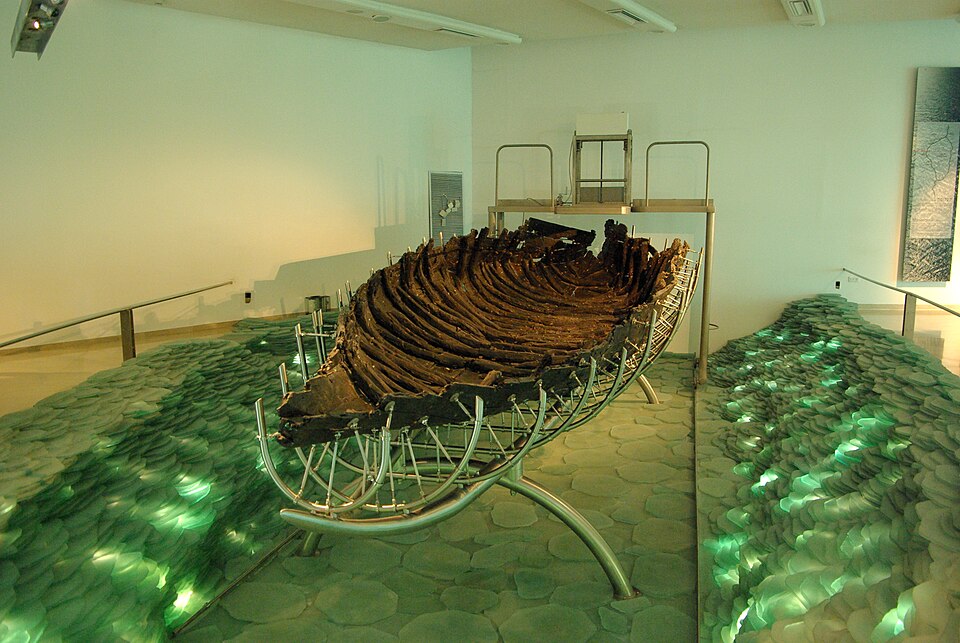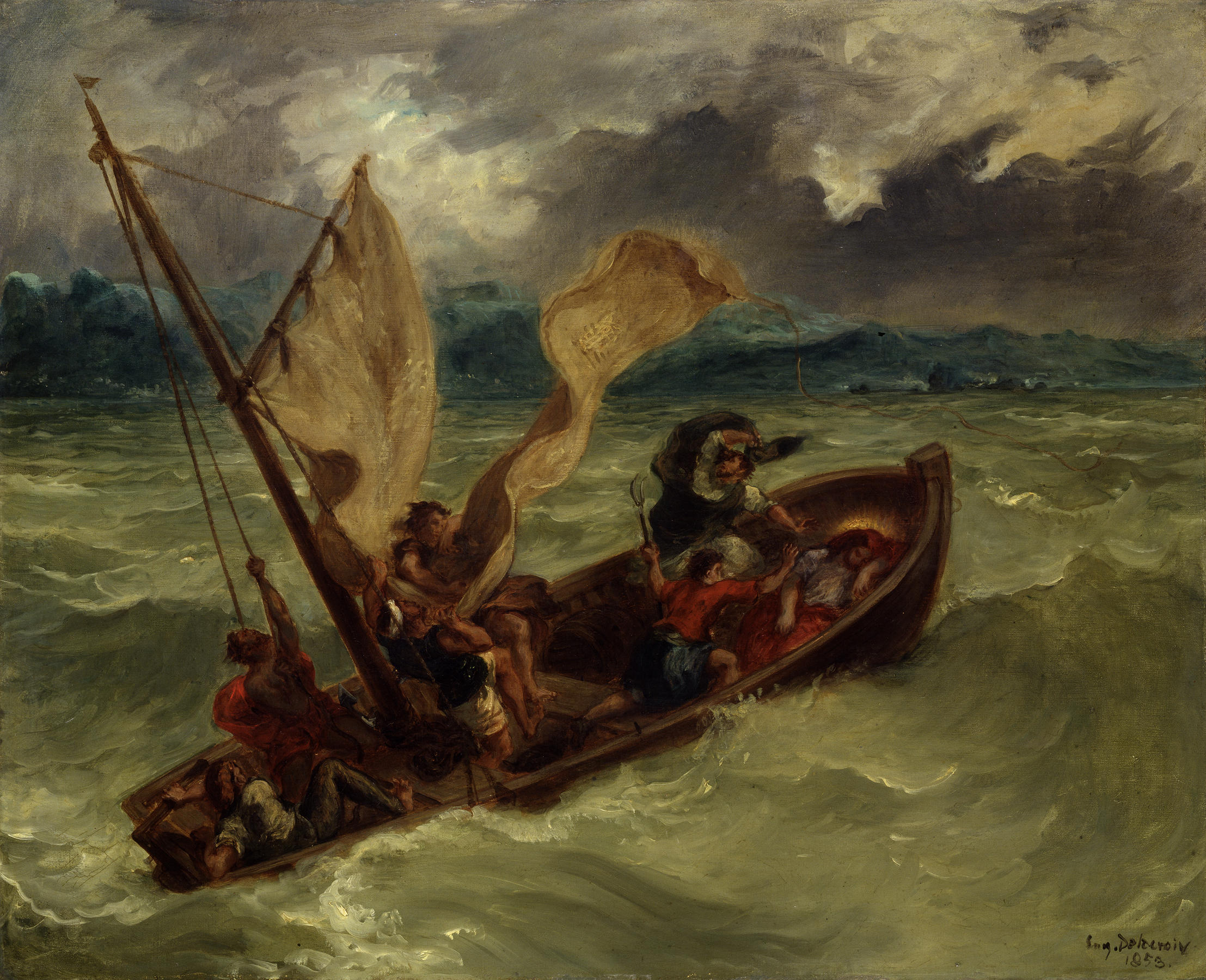In January 1986, brothers Moshe and Yuval Lufan made a discovery that would fascinate archaeologists and believers worldwide. They uncovered the remains of a 2,000-year-old fishing boat buried in the muddy shores of Israel’s Sea of Galilee. It was the first ancient vessel archaeologists had ever found in the biblical lake. Measuring 27 feet long and 7.5 feet wide, the boat dates to between 40 BC and 50 AD, making it contemporary with Jesus Christ’s ministry.

While there’s no evidence connecting this specific vessel to Jesus or his disciples, it represents exactly the type of vessel they would have used. The Gospels mention boats 50 times, and this discovery helps us better understand seafaring on the Sea of Galilee nearly 2,000 years ago.
A Race Against Time
The story began with Israel’s worst drought in decades. In 1985 and 1986, winter rains barely came. Authorities pumped water from the Sea of Galilee to irrigate fields throughout the country. As the lake level dropped, large areas of lake bottom lay exposed.
The Lufan brothers, amateur archaeologists from Kibbutz Ginnosar, regularly searched the exposed areas for ancient remains. In January 1986, they spotted ancient iron nails and then the oval outline of a boat buried in mud.
But was it truly ancient? The brothers consulted their father, a 20-year fisherman, who confirmed no modern ships had sunk there and the vessel lay buried far too deeply to be contemporary. They called in expert Mendel Nun and Department of Antiquities inspector Shelley Wachsmann.
On February 4, 1986, Wachsmann and colleague Kurt Raveh met with the brothers. The key test was the construction method. Ancient Mediterranean boats used distinctive wooden joints held with wooden pegs. When they scraped away mud, they found these joints with pegs visible.
The boat was ancient! As they celebrated, a sudden storm hit, followed by a double rainbow over the lake. But secrecy was impossible.
Read More: Artificial Intelligence Offers New Look at Jesus Using Shroud of Turin
When the News Broke
By Sunday, newspapers reported a “boat of Jesus” discovery. The Ministry of Tourism promoted the “Jesus connection” to draw pilgrims, while rumors spread of gold coins hidden in the wreck. Treasure hunters began searching the area. The team realized they had to excavate immediately or risk losing the ship to looters.
They had three days to organize what normally takes months of preparation. The team brought in Professor J. Richard Steffy, a leading archaeologist, to help. The American Embassy approved the cultural grant funding within 14 hours.
Today’s archaeological emergencies benefit from 3D scanning that can document a site in hours rather than weeks, but in 1986, the team relied on careful photography and hand measurements.
The Marathon Excavation
The excavation began February 16, but new problems immediately arose. The lake was rising, threatening to submerge the site again. The team lobbied government ministers to build massive dikes around the site rather than lower the entire lake level.
With the site secured, they worked around the clock for 11 days and nights. Gas fishing lamps cast an eerie yellow glow as volunteers from surrounding communities joined the effort, earning the vessel its nickname “the Love Boat” for bringing people together.
The excavation turned up not one boat, but fragments of two additional vessels, suggesting craft builders used the area for building and repairing the same type of boats that would have served Jesus and his disciples. They also found a pyramidal arrowhead matching those found at Gamla, indicating a possible connection to the Roman-Jewish conflicts.
The ship’s fragile condition posed the biggest challenge. The wood was 80 percent water with the consistency of wet cardboard. Any drying would cause irreversible collapse. Conservator Orna Cohen created a solution: wrap the entire vessel in a fiberglass and foam cocoon.
Once encased in what resembled “an overgrown, melted marshmallow,” they flooded the excavation pit. The craft “sailed” again as it floated through a channel to the cheers of onlookers.
A Window Into Ancient Times
Radiocarbon tests dated the boat’s construction to 40 BC (plus or minus 80 years). Pottery studies by Dr. David Adan-Bayewitz narrowed this to the late first century BC through about 70 AD. Steffy’s construction analysis confirmed similar dates.
Builders constructed the vessel primarily of cedar planks but used 10 different wood types. This suggests either a wood shortage or extensive repairs using scrap materials. Owners had repeatedly repaired it throughout its long life, using many timbers salvaged from older vessels.
The boat could hold four rowers plus a helmsman, with space for about 15 people total. Impressions on the keel showed it once had a mast, allowing it to be both sailed and rowed. Its flat bottom enabled fishing close to shore, perfect for the net fishing Jesus described in his parable about heaven.
The discovery adds detail to Gospel accounts. When Mark describes Jesus sleeping “in the stern, asleep on the pillow” during the storm (Mark 4:37), he likely rested under the stern platform, the boat’s most protected area, on a sandbag used for weight and balance.
Legacy of Discovery
After 12 years of preservation treatment, the vessel now sits in the Yigal Allon Museum in Kibbutz Ginosar. It is historically important to Jewish people as an example of their ancestors’ first-century watercraft, and to Christians as representing the type used by Jesus and his disciples.

Though we have no proof this boat played any part in the events of Jesus’ time, it helps us better understand both the Gospel accounts and life on the Sea of Galilee 2,000 years ago. Most ancient vessels decay completely, but this rare survivor allows a glimpse into the biblical past. It shows what careful archaeology and lake-bottom mud can preserve.
Read More: Scientists Discover New Biblical Insights About Jesus’ Death and Resurrection at His Burial Site
